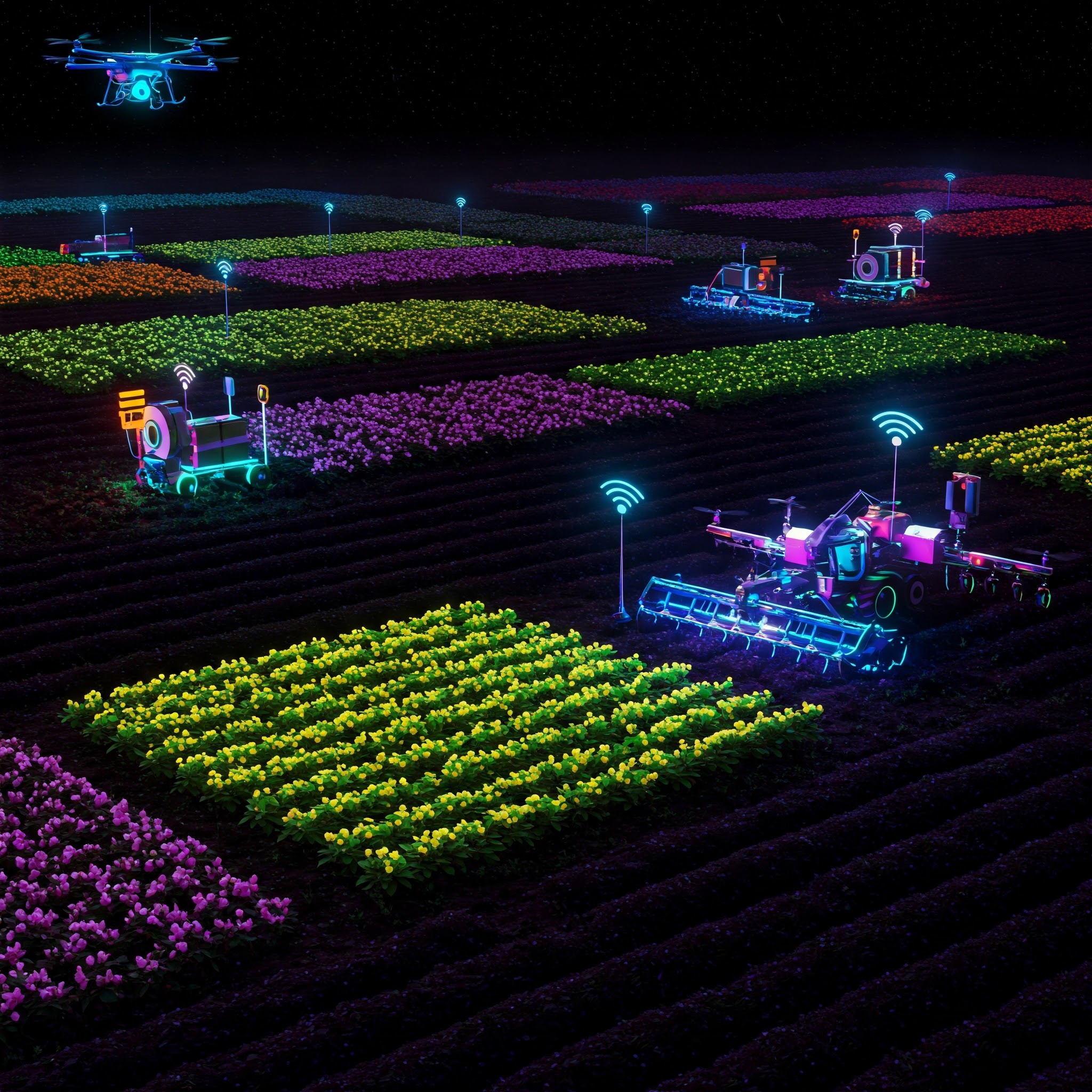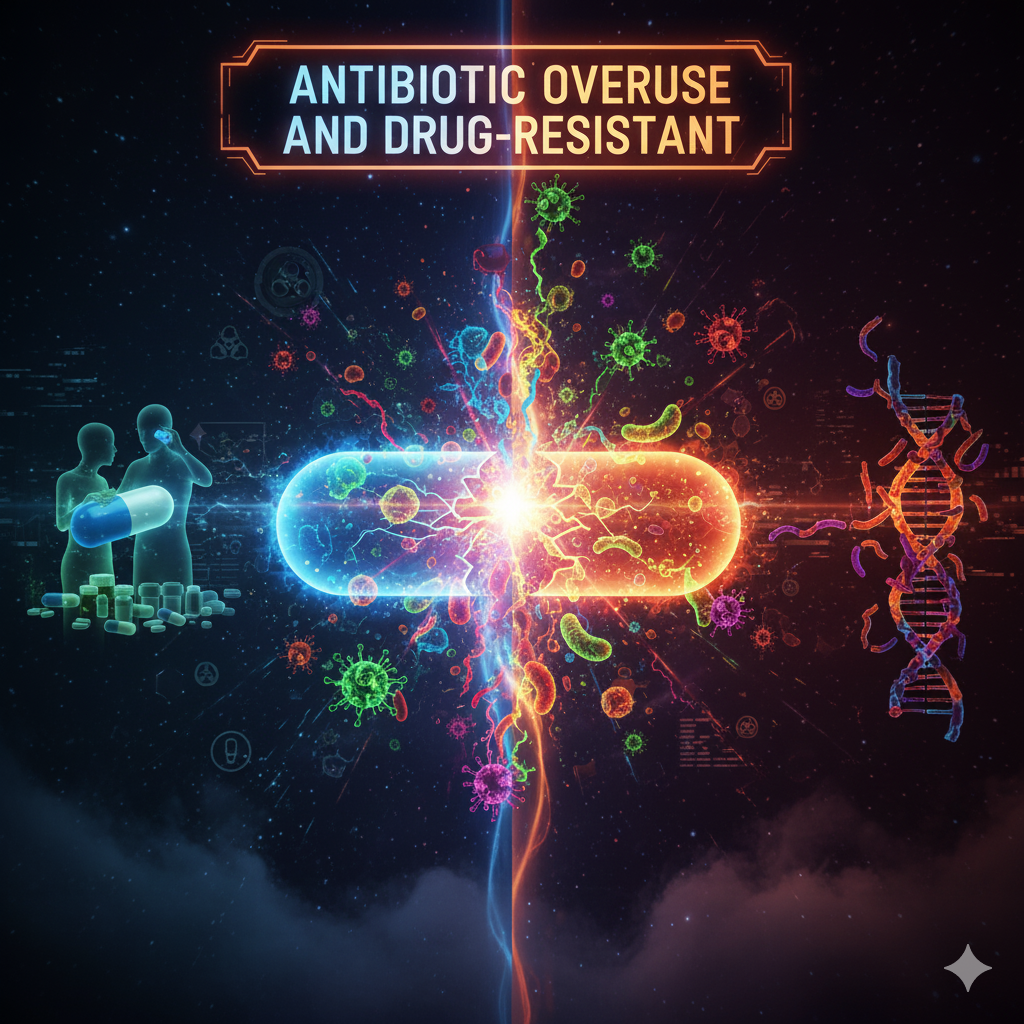Introduction
Agriculture is the backbone of many economies and an essential pillar of human survival. However, in the face of challenges such as climate change, soil degradation, and increasing global population, traditional farming methods often fall short. Enter Smart Agriculture and Precision Farming—two complementary approaches that harness advanced technologies like the Internet of Things (IoT), Artificial Intelligence (AI), and Big Data to revolutionize how we grow food.
This article explores the concepts, technologies, benefits, challenges, and the future of smart agriculture and precision farming, offering a comprehensive educational resource for students, researchers, and enthusiasts.
What is Smart Agriculture?
Smart Agriculture refers to the use of modern technologies to improve the efficiency, productivity, and sustainability of farming. It involves the integration of digital tools such as sensors, robotics, data analytics, satellite monitoring, and AI into farming practices. The goal is to make farming more data-driven and automated, thereby enhancing decision-making and reducing waste.
Smart agriculture goes beyond crop production and includes livestock monitoring, aquaculture, greenhouse management, and supply chain integration.
What is Precision Farming?
Precision Farming or Precision Agriculture is a subset of smart agriculture. It focuses on observing, measuring, and responding to inter- and intra-field variability in crops. It aims to apply the right amount of input (seeds, fertilizers, water, pesticides) at the right time and place to maximize yield and minimize environmental impact.
Key principle: “Do more with less” — that is, increase productivity using fewer resources.
Key Technologies in Smart Agriculture and Precision Farming
1. Internet of Things (IoT)
- IoT devices like soil moisture sensors, weather stations, and GPS trackers collect real-time data.
- This data is transmitted to cloud-based systems for analysis and used for decision-making.
- Example: Smart irrigation systems adjust water supply based on soil moisture levels.
2. Artificial Intelligence (AI) and Machine Learning
- AI algorithms predict crop diseases, optimize planting schedules, and analyze market trends.
- Drones and image recognition tools identify plant health problems early.
- Machine learning models help in yield forecasting and resource allocation.
3. Remote Sensing and Satellite Imaging
- Satellite imagery helps monitor crop growth, land use, and environmental changes.
- Normalized Difference Vegetation Index (NDVI) is used to assess plant health.
4. Global Positioning System (GPS) and Geographic Information System (GIS)
- GPS-enabled machinery ensures precision in planting, spraying, and harvesting.
- GIS mapping provides field-specific data to guide input application.
5. Drones and Unmanned Aerial Vehicles (UAVs)
- Drones provide aerial imagery for field monitoring.
- Equipped with sensors, they can spray pesticides or fertilizers precisely where needed.
6. Big Data and Analytics
- Huge volumes of data from farms are analyzed to derive actionable insights.
- Trends in weather, soil quality, crop performance, and market demand are processed to enhance efficiency.
7. Robotics and Automation
- Autonomous tractors, seed planters, and harvesters are reducing labor costs.
- Robotic milking machines in dairy farms improve productivity and hygiene.
Applications of Smart Agriculture & Precision Farming
1. Precision Irrigation
- Delivers the right amount of water directly to plant roots.
- Reduces water wastage, especially in arid and semi-arid regions.
2. Crop Monitoring and Health Management
- Drones and sensors detect pests, diseases, and nutrient deficiencies.
- Early intervention prevents crop loss and reduces pesticide use.
3. Soil Health Monitoring
- Real-time data on pH, salinity, and organic matter guides fertilizer application.
- Soil mapping enables zone-specific treatment, improving soil fertility.
4. Climate-Smart Farming
- Weather prediction systems help schedule planting and harvesting.
- Prevents losses due to unexpected rainfall, drought, or frost.
5. Livestock Monitoring
- Wearables on animals track health, reproduction cycles, and feeding behavior.
- Improves milk and meat quality, reduces veterinary costs.
6. Smart Greenhouses
- Automated systems control temperature, humidity, and lighting.
- Ensures year-round production of high-value crops like tomatoes, lettuce, and strawberries.
7. Supply Chain and Market Linkages
- Blockchain and mobile apps link farmers to markets directly.
- Reduces dependence on middlemen and enhances traceability.
Benefits of Smart Agriculture and Precision Farming
1. Increased Productivity
- Higher crop yields per acre due to data-driven decisions.
- Reduced loss from pests, diseases, and unpredictable weather.
2. Efficient Resource Utilization
- Saves water, fertilizers, and energy.
- Minimizes input costs without compromising output.
3. Environmental Sustainability
- Decreases chemical runoff into water bodies.
- Reduces greenhouse gas emissions through efficient fuel and fertilizer use.
4. Improved Food Security
- Enhanced productivity ensures stable food supply.
- Real-time monitoring reduces post-harvest losses.
5. Reduced Labor Dependency
- Automation addresses the problem of labor shortages.
- Reduces physical workload for farmers.
6. Better Decision Making
- Real-time insights from sensors and analytics enhance planning and risk management.
- Data forecasting aids in market price prediction and inventory planning.
Challenges in Implementing Smart Agriculture
1. High Initial Costs
- Advanced technologies and equipment can be expensive for small and marginal farmers.
- Return on investment may take several years.
2. Digital Divide
- Lack of internet connectivity and technical literacy, especially in rural areas, hinders adoption.
- Training and capacity building are essential.
3. Data Privacy and Security
- Large-scale data collection raises concerns over privacy and misuse.
- Need for strict cybersecurity and data governance frameworks.
4. Fragmented Land Holdings
- Small farm sizes in countries like India make it hard to implement large-scale precision farming.
- Consolidation or cooperative farming models may help.
5. Interoperability Issues
- Different brands of equipment and software may not integrate easily.
- Standardization of platforms is needed.
Global and Indian Perspectives
Global Success Stories
- United States: Use of AI-powered equipment and drones has optimized yields in large-scale farming.
- Netherlands: Known for high-tech greenhouse farming and precision horticulture.
- Israel: Leader in smart irrigation and water-efficient agriculture.
India’s Efforts and Potential
- Government schemes like Digital Agriculture Mission, eNAM, and Kisan Drones aim to digitize Indian agriculture.
- Agri-tech startups such as DeHaat, CropIn, and AgNext are driving innovation.
- PM-Kisan and other DBT schemes offer financial support for tech adoption.
Despite challenges, India’s large agricultural base, combined with rising mobile penetration and digital literacy, offers significant potential for smart farming solutions.
Future Outlook
1. AI-Powered Autonomous Farming
- Farms of the future will use self-driving tractors, robotic planters, and AI-managed supply chains.
2. Climate-Resilient Smart Farms
- Integration of AI with climate models will help farms adapt to changing weather patterns.
3. Vertical and Urban Farming
- Precision technologies will enable food production in urban areas using hydroponics and aeroponics.
4. Integration with Blockchain
- Ensures transparent food traceability, fair trade practices, and better quality control.
5. Open-Source Platforms and Farmer Cooperatives
- Shared resources and knowledge platforms will make precision farming accessible to all.
Conclusion
Smart agriculture and precision farming are not mere trends—they are necessities in a world grappling with resource scarcity, climate volatility, and rising food demand. By leveraging cutting-edge technologies, farmers can increase productivity, reduce environmental impact, and ensure food security for future generations.
However, for these solutions to become widespread, investments in infrastructure, education, policy support, and inclusivity are essential. The future of farming lies at the intersection of technology and tradition, where innovation enhances the age-old wisdom of agriculture.




